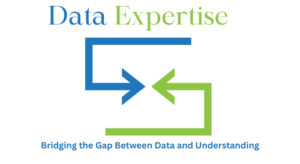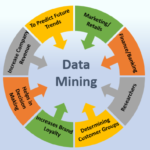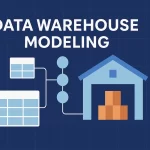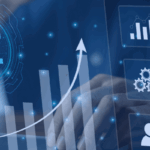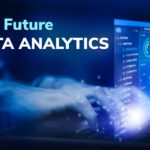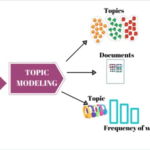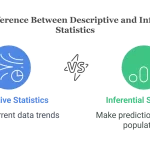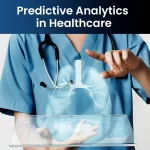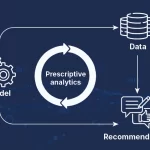Data Analytics
Data Analytics involves the process of examining data sets to draw conclusions about the information they contain. By applying data analytics techniques, businesses can make informed decisions, optimize processes, and uncover valuable insights. Explore the latest advancements, methodologies, and applications in our Data Analytics blog posts below.
In today’s data-driven world, the importance of Data Analytics cannot be overstated. Organizations are leveraging data analytics to gain a competitive edge, improve operational efficiency, and enhance customer experiences. The field of data analytics is constantly evolving, with new tools and techniques emerging regularly.
What are the key benefits of implementing Data Analytics in business operations?
Find the related blogs below to explore the key benefits of implementing Data Analytics in business operations.
Related Blogs
- The Role of Predictive Data Mining in Strategic Business Growth
 by Durgesh KekareData mining plays a vital role for businesses and organizations in making a strong digital presence. But to do that, you need to dive into present-day data, analyse key trends, and make certain assumptions about what is possibly happening next. In that manner, you will be able to make your long-term business strategy and streamline it. The usefulness of data mining services also depends on how much they’re being used as part of your strategic plan, and how they fit into your organizational objectives. The Low Down on Predictive Data Mining Data mining can be defined as the process of… Read more: The Role of Predictive Data Mining in Strategic Business Growth
by Durgesh KekareData mining plays a vital role for businesses and organizations in making a strong digital presence. But to do that, you need to dive into present-day data, analyse key trends, and make certain assumptions about what is possibly happening next. In that manner, you will be able to make your long-term business strategy and streamline it. The usefulness of data mining services also depends on how much they’re being used as part of your strategic plan, and how they fit into your organizational objectives. The Low Down on Predictive Data Mining Data mining can be defined as the process of… Read more: The Role of Predictive Data Mining in Strategic Business Growth - Why Should Companies Partner With Human Resources Consulting Services for Strategic Planning?
 by Durgesh KekareIf your team feels busy yet progress seems slow, you’re not alone. It’s a common refrain that many companies tend to sing as it becomes difficult to synchronize people power with long-term business objectives. This is where human resources consulting services come in; they help align workforce capability with company vision. Think of them as your co-pilot in the company’s strategic thinking — maximizing corporate strategy, building leadership, and transforming people’s problems into opportunities for growth. With a combination of data-oriented HR consulting insights and smart business consulting, they help any company achieve workforce harmony while heralding in lasting success.… Read more: Why Should Companies Partner With Human Resources Consulting Services for Strategic Planning?
by Durgesh KekareIf your team feels busy yet progress seems slow, you’re not alone. It’s a common refrain that many companies tend to sing as it becomes difficult to synchronize people power with long-term business objectives. This is where human resources consulting services come in; they help align workforce capability with company vision. Think of them as your co-pilot in the company’s strategic thinking — maximizing corporate strategy, building leadership, and transforming people’s problems into opportunities for growth. With a combination of data-oriented HR consulting insights and smart business consulting, they help any company achieve workforce harmony while heralding in lasting success.… Read more: Why Should Companies Partner With Human Resources Consulting Services for Strategic Planning? - Mastering Data Warehouse Modeling: The Ultimate Power Guide for Modern Analytics Success
 by Durgesh KekareIn today’s data-driven organizations, a well-designed data warehouse is more than a storage system — the backbone of analytics, reporting and business intelligence. At the heart of that backbone lies data warehouse modeling, the design discipline that ensures efficient querying, high performance, scalability, and integrity of analytics data. This guide explores what modeling is, why it matters, the core types of schemas, techniques, real-world example application, best practices, emerging trends and pitfalls. Understanding Data Warehouse Modeling Data warehouse modeling is the design process of structuring how data is stored, organised and related within a data warehouse for analytics purposes. It… Read more: Mastering Data Warehouse Modeling: The Ultimate Power Guide for Modern Analytics Success
by Durgesh KekareIn today’s data-driven organizations, a well-designed data warehouse is more than a storage system — the backbone of analytics, reporting and business intelligence. At the heart of that backbone lies data warehouse modeling, the design discipline that ensures efficient querying, high performance, scalability, and integrity of analytics data. This guide explores what modeling is, why it matters, the core types of schemas, techniques, real-world example application, best practices, emerging trends and pitfalls. Understanding Data Warehouse Modeling Data warehouse modeling is the design process of structuring how data is stored, organised and related within a data warehouse for analytics purposes. It… Read more: Mastering Data Warehouse Modeling: The Ultimate Power Guide for Modern Analytics Success - Cloud Computing Analytics: The Ultimate Guide to Intelligent Data-Driven Insights
 by Durgesh KekareIn the modern digital economy, data has become the most valuable business asset. Every click, transaction, and customer interaction generates insights that can drive innovation, efficiency, and growth. However, with the explosion of big data, traditional on-premise analytics systems can no longer keep up with the scale and speed of modern information flows. This challenge led to the evolution of cloud computing analytics, an approach that combines the scalability of cloud infrastructure with the intelligence of advanced data analytics.Cloud analytics allows organizations to collect, process, and analyze massive datasets in real time, making data-driven decisions faster and more effectively than… Read more: Cloud Computing Analytics: The Ultimate Guide to Intelligent Data-Driven Insights
by Durgesh KekareIn the modern digital economy, data has become the most valuable business asset. Every click, transaction, and customer interaction generates insights that can drive innovation, efficiency, and growth. However, with the explosion of big data, traditional on-premise analytics systems can no longer keep up with the scale and speed of modern information flows. This challenge led to the evolution of cloud computing analytics, an approach that combines the scalability of cloud infrastructure with the intelligence of advanced data analytics.Cloud analytics allows organizations to collect, process, and analyze massive datasets in real time, making data-driven decisions faster and more effectively than… Read more: Cloud Computing Analytics: The Ultimate Guide to Intelligent Data-Driven Insights - Generative AI for Data Analytics: The Transformative Power of Intelligent Insights
 by Durgesh KekareIn recent years, Generative AI for Data Analytics has emerged as one of the most powerful synergies in artificial intelligence. As data continues to fuel business innovation, organizations are turning to generative models to not only analyze existing data but also generate new insights, simulate scenarios, and enhance decision-making accuracy. Unlike traditional analytics that rely purely on historical data, Generative AI (GenAI) leverages deep learning models like Generative Adversarial Networks (GANs) and Large Language Models (LLMs) to generate new, realistic data patterns. This ability revolutionizes how companies handle predictive modeling, customer segmentation, and business forecasting. For example, financial analysts can… Read more: Generative AI for Data Analytics: The Transformative Power of Intelligent Insights
by Durgesh KekareIn recent years, Generative AI for Data Analytics has emerged as one of the most powerful synergies in artificial intelligence. As data continues to fuel business innovation, organizations are turning to generative models to not only analyze existing data but also generate new insights, simulate scenarios, and enhance decision-making accuracy. Unlike traditional analytics that rely purely on historical data, Generative AI (GenAI) leverages deep learning models like Generative Adversarial Networks (GANs) and Large Language Models (LLMs) to generate new, realistic data patterns. This ability revolutionizes how companies handle predictive modeling, customer segmentation, and business forecasting. For example, financial analysts can… Read more: Generative AI for Data Analytics: The Transformative Power of Intelligent Insights - The Future of Data Analytics: Unlocking Transformational Possibilities for Businesses
 by Durgesh KekareIn the last decade, data analytics has shifted from being a support function to becoming the strategic core of decision-making. Organizations that once made decisions based on intuition now rely on advanced analytics to predict, optimize, and personalize their operations. The future of data analytics is not just about faster processing or larger datasets—it’s about transforming industries, reshaping customer experiences, and even redefining how governments function. With businesses generating over 328 million terabytes of data per day (Statista, 2024), the challenge lies in not just storing but extracting meaningful insights at scale. The Evolution of Data Analytics: From Descriptive to… Read more: The Future of Data Analytics: Unlocking Transformational Possibilities for Businesses
by Durgesh KekareIn the last decade, data analytics has shifted from being a support function to becoming the strategic core of decision-making. Organizations that once made decisions based on intuition now rely on advanced analytics to predict, optimize, and personalize their operations. The future of data analytics is not just about faster processing or larger datasets—it’s about transforming industries, reshaping customer experiences, and even redefining how governments function. With businesses generating over 328 million terabytes of data per day (Statista, 2024), the challenge lies in not just storing but extracting meaningful insights at scale. The Evolution of Data Analytics: From Descriptive to… Read more: The Future of Data Analytics: Unlocking Transformational Possibilities for Businesses - Topic Modeling: The Ultimate Power Guide to Unlocking Hidden Patterns in Text
 by Durgesh KekareText data is everywhere—from research papers and news articles to customer reviews and social media conversations. But analyzing this text manually is nearly impossible when dealing with millions of documents. This is where topic modeling steps in. Topic modeling is an unsupervised machine learning technique used to identify hidden themes or patterns within large collections of documents. Instead of manually reading each document, algorithms automatically group similar words and phrases into topics. This ability to extract meaningful insights from unstructured data makes topic modeling one of the most powerful tools in natural language processing (NLP). Why Topic Modeling Matters in… Read more: Topic Modeling: The Ultimate Power Guide to Unlocking Hidden Patterns in Text
by Durgesh KekareText data is everywhere—from research papers and news articles to customer reviews and social media conversations. But analyzing this text manually is nearly impossible when dealing with millions of documents. This is where topic modeling steps in. Topic modeling is an unsupervised machine learning technique used to identify hidden themes or patterns within large collections of documents. Instead of manually reading each document, algorithms automatically group similar words and phrases into topics. This ability to extract meaningful insights from unstructured data makes topic modeling one of the most powerful tools in natural language processing (NLP). Why Topic Modeling Matters in… Read more: Topic Modeling: The Ultimate Power Guide to Unlocking Hidden Patterns in Text - Descriptive Statistics vs Inferential Statistics: The Ultimate Power Guide for Data Analysis
 by Durgesh KekareIn the world of data analysis, two fundamental branches of statistics—descriptive statistics vs inferential statistics—play crucial roles in interpreting and understanding information. While descriptive statistics summarize raw data into understandable forms like averages, charts, and graphs, inferential statistics go further, helping us make predictions and test hypotheses beyond the immediate dataset. Both approaches are vital for businesses, researchers, and data scientists who want to extract value from data. To truly master data-driven decision-making, it’s essential to understand not only their definitions but also their differences, use cases, and limitations. What Are Descriptive Statistics? Definition and Purpose Descriptive statistics are methods… Read more: Descriptive Statistics vs Inferential Statistics: The Ultimate Power Guide for Data Analysis
by Durgesh KekareIn the world of data analysis, two fundamental branches of statistics—descriptive statistics vs inferential statistics—play crucial roles in interpreting and understanding information. While descriptive statistics summarize raw data into understandable forms like averages, charts, and graphs, inferential statistics go further, helping us make predictions and test hypotheses beyond the immediate dataset. Both approaches are vital for businesses, researchers, and data scientists who want to extract value from data. To truly master data-driven decision-making, it’s essential to understand not only their definitions but also their differences, use cases, and limitations. What Are Descriptive Statistics? Definition and Purpose Descriptive statistics are methods… Read more: Descriptive Statistics vs Inferential Statistics: The Ultimate Power Guide for Data Analysis - Skills That Will Define Professional Success in 2025
 by Durgesh KekareWork is changing faster than ever. What mattered five or ten years ago doesn’t always match what companies need today. By 2025, success will depend on a mix of technical knowledge and practical skills. Employers are looking for professionals who can handle change, think clearly, and work well with others. These skills are not limited to office jobs. They matter for freelancers, business owners, and students too. If you are studying something technical, like a mechanical engineer degree online, you’ll see that these skills are as important as your academic subjects. Knowledge gets you through exams, but employers look at… Read more: Skills That Will Define Professional Success in 2025
by Durgesh KekareWork is changing faster than ever. What mattered five or ten years ago doesn’t always match what companies need today. By 2025, success will depend on a mix of technical knowledge and practical skills. Employers are looking for professionals who can handle change, think clearly, and work well with others. These skills are not limited to office jobs. They matter for freelancers, business owners, and students too. If you are studying something technical, like a mechanical engineer degree online, you’ll see that these skills are as important as your academic subjects. Knowledge gets you through exams, but employers look at… Read more: Skills That Will Define Professional Success in 2025 - Predictive Analytics in Healthcare: The Ultimate Power Guide to Transforming Patient Outcomes
 by Durgesh KekareHealthcare has always been about prevention, treatment, and recovery, but what if doctors could predict illnesses before they happen? Imagine a world where hospitals prevent readmissions, doctors create personalized treatments, and insurance companies optimize costs — all powered by predictive analytics in healthcare. This technology is not just a buzzword; it is a transformative force that merges big data, machine learning, and medical science to enhance patient outcomes. What is Predictive Analytics in Healthcare? Predictive analytics in healthcare refers to the use of historical patient data, machine learning models, and statistical techniques to forecast medical outcomes. It combines: Why Predictive… Read more: Predictive Analytics in Healthcare: The Ultimate Power Guide to Transforming Patient Outcomes
by Durgesh KekareHealthcare has always been about prevention, treatment, and recovery, but what if doctors could predict illnesses before they happen? Imagine a world where hospitals prevent readmissions, doctors create personalized treatments, and insurance companies optimize costs — all powered by predictive analytics in healthcare. This technology is not just a buzzword; it is a transformative force that merges big data, machine learning, and medical science to enhance patient outcomes. What is Predictive Analytics in Healthcare? Predictive analytics in healthcare refers to the use of historical patient data, machine learning models, and statistical techniques to forecast medical outcomes. It combines: Why Predictive… Read more: Predictive Analytics in Healthcare: The Ultimate Power Guide to Transforming Patient Outcomes - Prescriptive Analytics: The Ultimate Power Guide to Smarter Business Decisions
 by Durgesh KekareIn today’s data-first business landscape, making decisions purely on intuition is no longer enough. Organizations need advanced insights that not only explain past events (descriptive analytics) or forecast future outcomes (predictive analytics) but also recommend the best course of action. That’s where prescriptive analytics comes in. It goes a step beyond prediction by suggesting what decisions should be made to achieve the desired outcome. Imagine a GPS that doesn’t just predict traffic jams but actually recommends the fastest, most fuel-efficient, and safest route. That’s the role of prescriptive analytics in business. Why Prescriptive Analytics Matters in the Data-Driven Era With… Read more: Prescriptive Analytics: The Ultimate Power Guide to Smarter Business Decisions
by Durgesh KekareIn today’s data-first business landscape, making decisions purely on intuition is no longer enough. Organizations need advanced insights that not only explain past events (descriptive analytics) or forecast future outcomes (predictive analytics) but also recommend the best course of action. That’s where prescriptive analytics comes in. It goes a step beyond prediction by suggesting what decisions should be made to achieve the desired outcome. Imagine a GPS that doesn’t just predict traffic jams but actually recommends the fastest, most fuel-efficient, and safest route. That’s the role of prescriptive analytics in business. Why Prescriptive Analytics Matters in the Data-Driven Era With… Read more: Prescriptive Analytics: The Ultimate Power Guide to Smarter Business Decisions - Mastering Principal Component Analysis: A Comprehensive Guide to Dimensionality Reduction
 by Durgesh KekareIn today’s data-driven world, organizations collect vast amounts of data with numerous variables. While this high-dimensional data can contain valuable insights, it often becomes complex to analyze and visualize. Principal Component Analysis (PCA) is a powerful statistical technique used to simplify such datasets while preserving their core information. PCA helps reduce the number of variables in your data (dimensionality reduction) while retaining the most important patterns. This makes it easier for analysts and machine learning models to interpret the data efficiently. What is PCA? Principal Component Analysis (PCA) is a mathematical technique used to reduce the number of variables in… Read more: Mastering Principal Component Analysis: A Comprehensive Guide to Dimensionality Reduction
by Durgesh KekareIn today’s data-driven world, organizations collect vast amounts of data with numerous variables. While this high-dimensional data can contain valuable insights, it often becomes complex to analyze and visualize. Principal Component Analysis (PCA) is a powerful statistical technique used to simplify such datasets while preserving their core information. PCA helps reduce the number of variables in your data (dimensionality reduction) while retaining the most important patterns. This makes it easier for analysts and machine learning models to interpret the data efficiently. What is PCA? Principal Component Analysis (PCA) is a mathematical technique used to reduce the number of variables in… Read more: Mastering Principal Component Analysis: A Comprehensive Guide to Dimensionality Reduction - Unlocking the Power of Fourier Analysis: The Backbone of Signal Processing and Modern Technology
 by Durgesh KekareWhether you’re streaming music, analyzing medical signals, or enhancing digital images, there’s a powerful mathematical tool working behind the scenes: Fourier analysis. This technique breaks down complex signals into simpler components, enabling clearer understanding, transformation, and manipulation of data across numerous fields. Fourier analysis is foundational in areas like engineering, physics, finance, and even neuroscience. If you’re diving into signal processing, AI, or data science, now’s the time to explore how Fourier analysis can elevate your skills and enhance your projects. What is Fourier Analysis? A Simple Concept with Complex ApplicationsAt its core, Fourier analysis is a method for expressing… Read more: Unlocking the Power of Fourier Analysis: The Backbone of Signal Processing and Modern Technology
by Durgesh KekareWhether you’re streaming music, analyzing medical signals, or enhancing digital images, there’s a powerful mathematical tool working behind the scenes: Fourier analysis. This technique breaks down complex signals into simpler components, enabling clearer understanding, transformation, and manipulation of data across numerous fields. Fourier analysis is foundational in areas like engineering, physics, finance, and even neuroscience. If you’re diving into signal processing, AI, or data science, now’s the time to explore how Fourier analysis can elevate your skills and enhance your projects. What is Fourier Analysis? A Simple Concept with Complex ApplicationsAt its core, Fourier analysis is a method for expressing… Read more: Unlocking the Power of Fourier Analysis: The Backbone of Signal Processing and Modern Technology - Mastering Data Wrangling: The Foundation of Reliable Data Analysis
 by Durgesh KekareIn today’s data-driven world, raw data is everywhere—but it’s rarely ready for immediate use. From inconsistent formats to missing values, the real-world data you collect needs significant transformation before it can power business insights or machine learning models. That’s where data wrangling comes in. Often called data munging, data wrangling is the essential process of cleaning, structuring, and enriching raw data into a usable format. If you’re working with analytics, business intelligence, or data science, learning data wrangling is a game-changer—start mastering it now to unlock the full potential of your data. What is Data Wrangling? Data wrangling refers to… Read more: Mastering Data Wrangling: The Foundation of Reliable Data Analysis
by Durgesh KekareIn today’s data-driven world, raw data is everywhere—but it’s rarely ready for immediate use. From inconsistent formats to missing values, the real-world data you collect needs significant transformation before it can power business insights or machine learning models. That’s where data wrangling comes in. Often called data munging, data wrangling is the essential process of cleaning, structuring, and enriching raw data into a usable format. If you’re working with analytics, business intelligence, or data science, learning data wrangling is a game-changer—start mastering it now to unlock the full potential of your data. What is Data Wrangling? Data wrangling refers to… Read more: Mastering Data Wrangling: The Foundation of Reliable Data Analysis - What is Databricks? The Unified Platform Powering Data, AI, and Analytics
 by Durgesh KekareIn the ever-evolving world of big data and artificial intelligence, modern enterprises need powerful tools to handle vast datasets, collaborate efficiently, and build intelligent applications. One name that stands out in this space is Databricks. If you’ve ever wondered, “What is Databricks?”, you’re not alone – this revolutionary platform is transforming how companies harness the power of data. Whether you’re a data engineer, scientist, or business leader, understanding Databricks can unlock immense value in your data-driven projects. Read on to discover how Databricks can modernize your data strategy and accelerate your journey toward AI and analytics success. What is Databricks?… Read more: What is Databricks? The Unified Platform Powering Data, AI, and Analytics
by Durgesh KekareIn the ever-evolving world of big data and artificial intelligence, modern enterprises need powerful tools to handle vast datasets, collaborate efficiently, and build intelligent applications. One name that stands out in this space is Databricks. If you’ve ever wondered, “What is Databricks?”, you’re not alone – this revolutionary platform is transforming how companies harness the power of data. Whether you’re a data engineer, scientist, or business leader, understanding Databricks can unlock immense value in your data-driven projects. Read on to discover how Databricks can modernize your data strategy and accelerate your journey toward AI and analytics success. What is Databricks?… Read more: What is Databricks? The Unified Platform Powering Data, AI, and Analytics - Mastering Multiple Classification Analysis: A Powerful Tool for Data-Driven Decision Making
 by Durgesh KekareIn the age of big data, making sense of complex datasets is critical for business growth, academic research, and strategic planning. One statistical method that offers deep insights into multi-dimensional data is multiple classification analysis (MCA). This technique allows analysts to evaluate the effect of multiple categorical variables on a dependent variable, providing clarity, precision, and actionable outcomes. Whether you’re a data scientist, marketer, social researcher, or business analyst, understanding MCA can significantly enhance your ability to interpret data and uncover hidden patterns. Dive into this guide to unlock the full power of multiple classification analysis and elevate your analytical… Read more: Mastering Multiple Classification Analysis: A Powerful Tool for Data-Driven Decision Making
by Durgesh KekareIn the age of big data, making sense of complex datasets is critical for business growth, academic research, and strategic planning. One statistical method that offers deep insights into multi-dimensional data is multiple classification analysis (MCA). This technique allows analysts to evaluate the effect of multiple categorical variables on a dependent variable, providing clarity, precision, and actionable outcomes. Whether you’re a data scientist, marketer, social researcher, or business analyst, understanding MCA can significantly enhance your ability to interpret data and uncover hidden patterns. Dive into this guide to unlock the full power of multiple classification analysis and elevate your analytical… Read more: Mastering Multiple Classification Analysis: A Powerful Tool for Data-Driven Decision Making - Mastering Data Pipelines: A Step-by-Step Guide to Building From Scratch
 by matthewIn today’s data-driven world, organizations across industries are striving to harness the power of data for insights, innovation, and decision-making. A crucial part of this process is the effective management of data, which is where data pipelines come into play. If you’re new to data pipelines or looking to refine your understanding, this guide will take you through the essentials, from what data pipelines are to how you can build one from scratch. Whether you’re a beginner or a seasoned professional, mastering data pipelines is an essential skill for anyone working with data. What is a Data Pipeline? At its… Read more: Mastering Data Pipelines: A Step-by-Step Guide to Building From Scratch
by matthewIn today’s data-driven world, organizations across industries are striving to harness the power of data for insights, innovation, and decision-making. A crucial part of this process is the effective management of data, which is where data pipelines come into play. If you’re new to data pipelines or looking to refine your understanding, this guide will take you through the essentials, from what data pipelines are to how you can build one from scratch. Whether you’re a beginner or a seasoned professional, mastering data pipelines is an essential skill for anyone working with data. What is a Data Pipeline? At its… Read more: Mastering Data Pipelines: A Step-by-Step Guide to Building From Scratch - Marketing Analytics: Key Insights, Tools, & Why It’s Crucial for Success
 by matthewIn today’s data-driven world, marketing analytics has become an essential tool for businesses aiming to maximize their marketing efforts, understand consumer behavior, and improve overall decision-making. The growing importance of data in crafting successful marketing strategies cannot be overstated. By effectively leveraging marketing analytics, companies can gain valuable insights into what works, what doesn’t, and how to better align their strategies with customer expectations. This article will delve into the importance of marketing analytics, explore some of the most powerful tools available, and discuss why it’s crucial for success in the modern business landscape. Understanding Marketing Analytics: A Comprehensive Overview… Read more: Marketing Analytics: Key Insights, Tools, & Why It’s Crucial for Success
by matthewIn today’s data-driven world, marketing analytics has become an essential tool for businesses aiming to maximize their marketing efforts, understand consumer behavior, and improve overall decision-making. The growing importance of data in crafting successful marketing strategies cannot be overstated. By effectively leveraging marketing analytics, companies can gain valuable insights into what works, what doesn’t, and how to better align their strategies with customer expectations. This article will delve into the importance of marketing analytics, explore some of the most powerful tools available, and discuss why it’s crucial for success in the modern business landscape. Understanding Marketing Analytics: A Comprehensive Overview… Read more: Marketing Analytics: Key Insights, Tools, & Why It’s Crucial for Success - Vanishing Gradient Problem: Causes & Solutions
 by matthewIntroduction Deep learning has revolutionized artificial intelligence (AI), enabling breakthroughs in various fields, from image recognition to natural language processing. However, training deep neural networks presents several challenges, one of the most significant being the vanishing gradient problem. This issue can hinder the performance of deep models, leading to slow convergence or even complete failure to learn. Understanding the vanishing gradient problem, its causes, and potential solutions is crucial for improving deep learning models. What is the Vanishing Gradient Problem? The vanishing gradient problem occurs during backpropagation when gradients become extremely small as they propagate through layers. This primarily affects… Read more: Vanishing Gradient Problem: Causes & Solutions
by matthewIntroduction Deep learning has revolutionized artificial intelligence (AI), enabling breakthroughs in various fields, from image recognition to natural language processing. However, training deep neural networks presents several challenges, one of the most significant being the vanishing gradient problem. This issue can hinder the performance of deep models, leading to slow convergence or even complete failure to learn. Understanding the vanishing gradient problem, its causes, and potential solutions is crucial for improving deep learning models. What is the Vanishing Gradient Problem? The vanishing gradient problem occurs during backpropagation when gradients become extremely small as they propagate through layers. This primarily affects… Read more: Vanishing Gradient Problem: Causes & Solutions - Data Engineering: A Comprehensive Guide
 by matthewIntroduction In today’s digital world, data is considered the new oil. Organizations rely on vast amounts of data to make informed decisions, improve operations, and drive business growth. However, raw data is often unstructured, scattered across multiple sources, and difficult to analyze. This is where data engineering comes into play. Data engineering is the process of designing, building, and managing the infrastructure that allows for the efficient collection, storage, and processing of data. This comprehensive guide will explore what data engineering is, its key components, the tools used, best practices, and its role in the broader field of data science… Read more: Data Engineering: A Comprehensive Guide
by matthewIntroduction In today’s digital world, data is considered the new oil. Organizations rely on vast amounts of data to make informed decisions, improve operations, and drive business growth. However, raw data is often unstructured, scattered across multiple sources, and difficult to analyze. This is where data engineering comes into play. Data engineering is the process of designing, building, and managing the infrastructure that allows for the efficient collection, storage, and processing of data. This comprehensive guide will explore what data engineering is, its key components, the tools used, best practices, and its role in the broader field of data science… Read more: Data Engineering: A Comprehensive Guide
